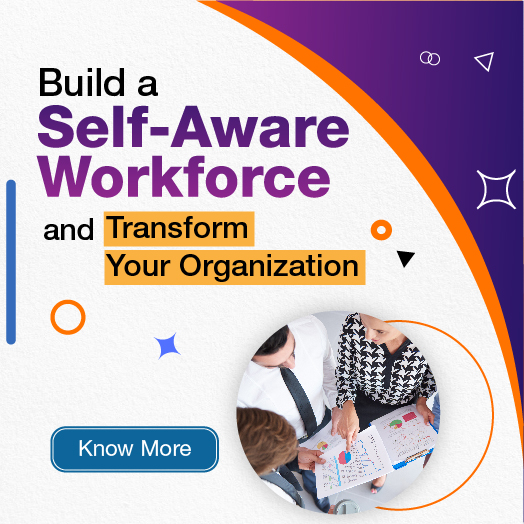
What Is a Leadership Assessment and Why Your Organization Needs One
- Our Subject Matter Experts
- August 4, 2025

In today’s fast-paced and ever-evolving work environment, having strong leadership isn’t just a competitive advantage—it’s a necessity. But what truly defines a great leader? Is it communication? Decision-making? Relationship-building? All of these traits matter, but self-awareness is often where effective leadership begins. This is where leadership assessments play a pivotal role.
Leadership assessments are structured tools designed to help individuals understand their behaviors, core leadership competencies, and areas for development. These evaluations don’t just measure what leaders can do—they reveal their potential. From Fortune 500 executives to first-time managers, leadership assessment tools are widely used to ensure the right people are in the right roles, drive team effectiveness, and fuel organizational success.
These assessments evaluate qualities such as emotional intelligence, communication styles, and decision-making approaches. They offer valuable insights into how leaders operate and where they can grow. They also uncover a person’s unique behavioral style, making it easier to foster both individual growth and cohesive team dynamics.
This guide explores how leadership assessments work, which tools are most effective, the importance of behavioral insight, and how these evaluations can redefine leadership for both individuals and organizations.
What Is a Leadership Assessment?
A leadership assessment is a structured process for evaluating an individual’s capacity to lead, influence, and inspire others within an organization. It identifies strengths, development areas, and leadership potential across key competencies. Organizations often use these evaluations for hiring, promotions, succession planning, and leadership development.
At its core, a leadership evaluation examines both thinking patterns and behavioral tendencies. It goes beyond résumés and interviews, assessing traits like emotional intelligence, decision-making ability, communication style, and adaptability. Behavioral style plays a central role, influencing how leaders respond to stress, motivate others, and build team relationships.
Common assessment methods include personality tests, 360-degree feedback, and behavioral interviews. These tools provide objective data that informs leadership selection and development decisions.
Accurate assessments aligned with behavioral styles allow companies to assign leaders to roles where they can thrive—improving team productivity, engagement, and overall organizational performance.
Types of Leadership Assessments to Discover Your True Potential
There is no one-size-fits-all leadership evaluation. The right tool depends on organizational goals and the depth of insight needed. Here are the most commonly used leadership assessment types:
1. Behavioral Style Assessments
These tools measure how a leader typically behaves—how they handle challenges, interact with others, make decisions, and manage stress. Popular tools like DISC and MBTI help identify behavioral tendencies that influence team dynamics and leadership effectiveness.
2. 360-Degree Feedback
This comprehensive tool collects feedback from peers, direct reports, and supervisors. It offers a well-rounded view of a leader’s interpersonal skills, communication style, and emotional intelligence. It’s one of the most effective tools for fostering self-awareness and growth.
3. Personality Assessments
Tests like the Big Five or Hogan Assessments evaluate stable personality traits—such as dependability, resilience, and integrity—that influence leadership behavior under pressure or change.
4. Cognitive Ability Tests
These tools assess critical thinking, problem-solving, and decision-making speed—key traits for effective leadership in high-pressure environments.
5. Situational Judgment Tests (SJTs)
These simulate real-world workplace scenarios to evaluate judgment, ethics, and prioritization. They provide insight into how a leader is likely to behave in high-stakes or ambiguous situations.
Why Behavioral Style Matters in Leadership Assessments
Understanding a leader’s behavioral style is one of the most valuable outcomes of a leadership assessment. Why? Because behavior drives results. The way leaders communicate, resolve conflict, and respond to pressure shapes team morale, productivity, and company culture.
A technically skilled leader may struggle if their behavioral style clashes with team needs or organizational dynamics. Leadership assessments uncover these patterns and help ensure the right fit between leaders and roles.
Most behavioral tools identify four core leadership styles:
- Dominant – task-focused, results-driven, assertive
- Influential – people-focused, enthusiastic, persuasive
- Steady – calm, dependable, relationship-oriented
- Compliant – detail-focused, analytical, process-driven
Each style has strengths and blind spots. By aligning roles with natural behavioral tendencies, organizations can develop more effective, self-aware leaders who adapt to team needs and drive better outcomes.
Top Leadership Assessment Tools You Should Know
Choosing the right leadership assessment tool is critical for evaluating leadership potential and guiding development. Here are some of the most respected tools in the industry:
1. DISC Assessment
DISC measures Dominance, Influence, Steadiness, and Conscientiousness—helping organizations identify leadership traits and improve collaboration across different behavioral styles.
2. Myers-Briggs Type Indicator (MBTI)
MBTI reveals psychological preferences in perception and decision-making. It helps leaders understand how they and others interact with the world.
3. 360-Degree Feedback
This tool offers holistic feedback from multiple stakeholders and is highly effective for measuring leadership behavior and interpersonal impact.
4. CliftonStrengths (StrengthsFinder)
This assessment identifies a leader’s top talents and how to maximize them. It’s ideal for developing leadership based on existing strengths.
5. Emotional Intelligence (EQ-i 2.0)
EQ-i measures emotional and social functioning—critical for communication, empathy, and conflict resolution.
6. Leadership Circle Profile
This assessment combines self-awareness with performance outcomes by comparing leaders to global benchmarks. It’s ideal for executive development and longitudinal growth tracking.
Using a combination of these tools enables a well-rounded approach to leadership evaluation, helping businesses identify, develop, and retain top talent.
Read more – Ways and Benefits of an Employee Assessment in the Workplace
How to Align Leadership Assessments with Organizational Goals
To drive real impact, leadership assessments must be tied to strategic business outcomes. Here’s how to align assessments with your organization’s goals:
- Define Strategic Leadership Priorities
Clarify which competencies matter most—innovation, emotional intelligence, agility—and ensure your tools measure those attributes. - Customize for Leadership Levels
Tailor assessments for executives, mid-level managers, and emerging leaders. One-size-fits-all approaches reduce accuracy. - Incorporate Results into Development Plans
Use assessment insights to build learning paths, training programs, and coaching initiatives. This creates a continuous, data-driven leadership development cycle. - Connect Behavior to Team Performance
Map leadership styles to key performance indicators (KPIs). Identify behaviors that drive results and replicate them across departments. - Support Succession Planning with Data
Use regular assessments to build a leadership talent pool. Identify high-potential individuals early and prepare them for future roles.
When aligned correctly, leadership evaluations become tools for transformation, not just diagnostics.
Common Pitfalls in Leadership Assessments (and How to Avoid Them)
Poorly executed assessments can undermine trust and derail leadership development. Avoid these common mistakes:
- Using a One-Size-Fits-All Approach
Different leadership roles require different skills. Customize your assessments based on role-specific competencies. - Relying Solely on Assessments
Supplement test results with interviews, performance reviews, and manager feedback for a fuller picture. - Overlooking Behavioral Diversity
Great leaders come in many forms. Don’t assume one style fits all situations. - Lack of Transparency
Clearly communicate the purpose and benefits of the assessment process to reduce resistance and increase buy-in. - No Follow-Through on Results
Data without action is wasted. Use insights to guide coaching, development, and succession strategies. - Ignoring Context
Behavioral effectiveness can vary by organizational culture and industry. Evaluate leadership in context.
Conclusion: Elevating Leadership Through Insightful Assessments
In a world of constant change, strong leadership is the foundation of long-term organizational success. But great leaders aren’t born—they’re identified, nurtured, and developed. Leadership assessments serve as powerful tools to uncover hidden potential, align behavior with strategic goals, and drive measurable impact.
Whether you’re building a future-ready leadership pipeline, improving team dynamics, or shifting organizational culture, a well-executed leadership evaluation strategy can deliver transformational results. From enhancing decision-making to boosting emotional intelligence, the benefits extend far beyond the individual.
However, assessments must be used intentionally. When integrated with coaching, development plans, and follow-up, they evolve from checklists into catalysts for meaningful change.
As you invest in your next generation of leaders, remember: Self-awareness is the first step toward exceptional leadership. And leadership assessments are the compass guiding the journey.
Ready to discover your leadership potential?
Choose tools that go beyond scores, highlight authentic behavioral styles, and empower your team with actionable insights.
Read More – How DiSC Assessment Transforms Team Dynamics and Collaboration






